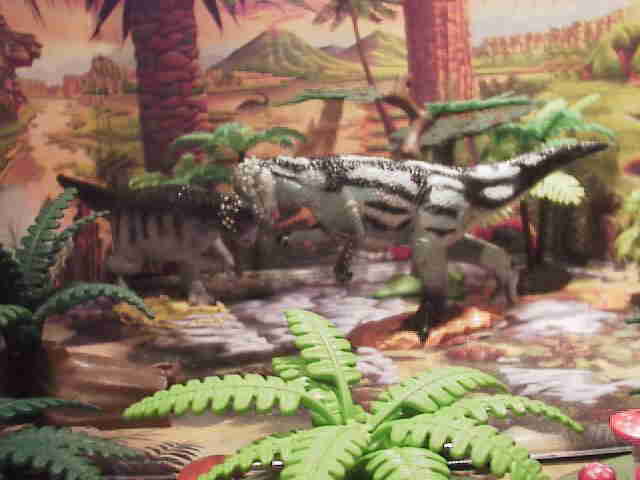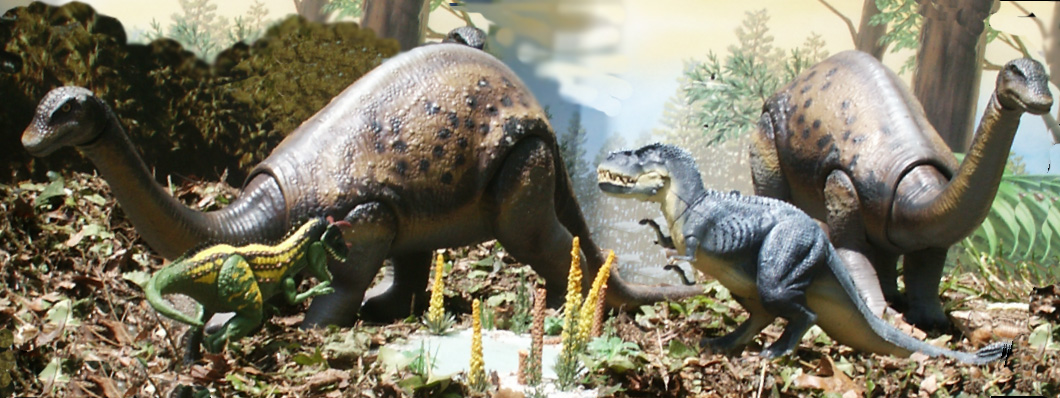Late Cretaceous
Update 091816
The Late Cretaceous 144 - 99 million years ago, is the final era of the Mesozoic. Flowering plants are wide spread in the northern continents of Laurasia. This is the most diverse period for dinosaurs.
 Laurasian
continents provide the most diverse range of fossils. This diversity
peaks in the North American Late Campanian and Early Masstrictian with
Judithian, Dinosaur Park Wahweap, Kaiparowits, Two Medicine and Edmontonian faunas. The Early Maastrictian is represented by the Kirtland and Horse Shoe
faunas. By this time flower plants are the major players in the
world. The last of the dinosaurs are known from the Alamo and Hell Creek formations in North America famous for Tyrannosaurs and Triceratops. There is some debate about how representative this is of the dinosaur’s worldwide.
Laurasian
continents provide the most diverse range of fossils. This diversity
peaks in the North American Late Campanian and Early Masstrictian with
Judithian, Dinosaur Park Wahweap, Kaiparowits, Two Medicine and Edmontonian faunas. The Early Maastrictian is represented by the Kirtland and Horse Shoe
faunas. By this time flower plants are the major players in the
world. The last of the dinosaurs are known from the Alamo and Hell Creek formations in North America famous for Tyrannosaurs and Triceratops. There is some debate about how representative this is of the dinosaur’s worldwide.

In China and Mongolia desert communities of small theropods with bird like characteristics have been discovered. Tsintaosaurus from the Jingangkou Formation is related to European hadrosaurs. In Asia the desert environments of Mongolia and China, like Flaming Clifts and Ukhaa Tolgod perserve the smaller faunas. Therizinosaurs are unique plant eaters. The existance of species found in both North America and Asia indicates at least intermitant land briges existed.
Europe is a collection of alluvial islands with crocodiles, swampy
ground inhabited by iguanodonts, hadrosaurs and turtles, flood plains
populated by sauropods and ankylosaurs and an upland fauna of
carnosaurs and coelurosaurs. The fauna combines laurasian, gondwana
imigrants with endemics showing with thr dwarfing island effects. Balaur
is a dromaeosaurid closely related to Velociraptor, but with some
unusual features interpreted as an island effect. Its hand has fused
fingers and is generally atrophied and unsuited to grasping. However,
its foot differs from other dromaeosaurids in having a large pedal claw
on digit as well as the usual claw on digit II, and the hind limbs are
modified for strength and the delivery of forceful
strikes.

Our best picture of Gondwana is from the Neuquenian of South America. South America retains a fauna dominated by saltasaurine titanosaurs and abeilosaurs but in the Masstrictian hadrosaurs and maniraptors from Laurasia show up at the end of the Mesozoic.

Africa in the first part of the Late Cretaceous (Cenomanian) has an Egyptian shoreline with tidal flats and channels, with mangrove forests supporting titianosaurids and large dinosaurian predators like spinosaurs. North Africa is arid except around the great rivers that support diverse crocodyliformes and range of large predators with limited number of large herbivores.
